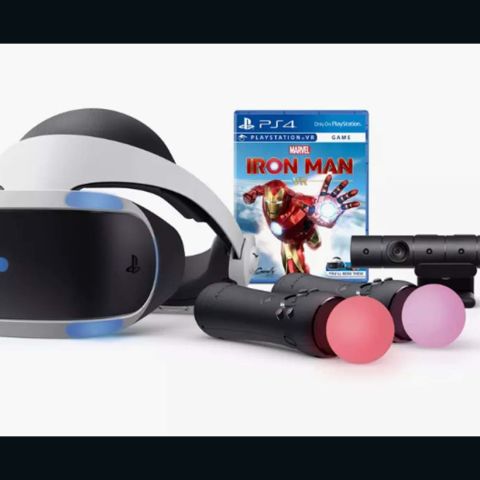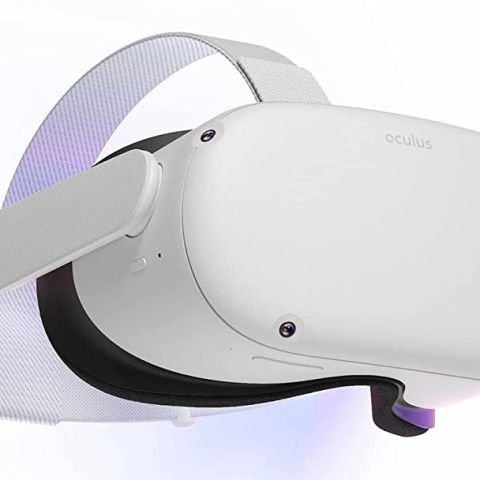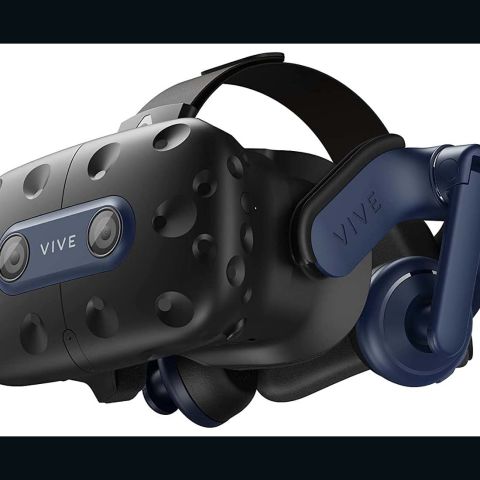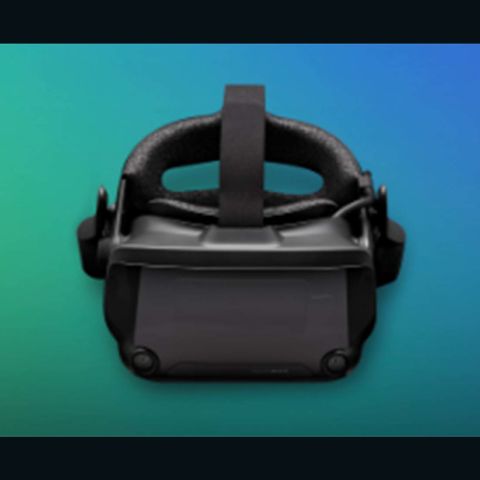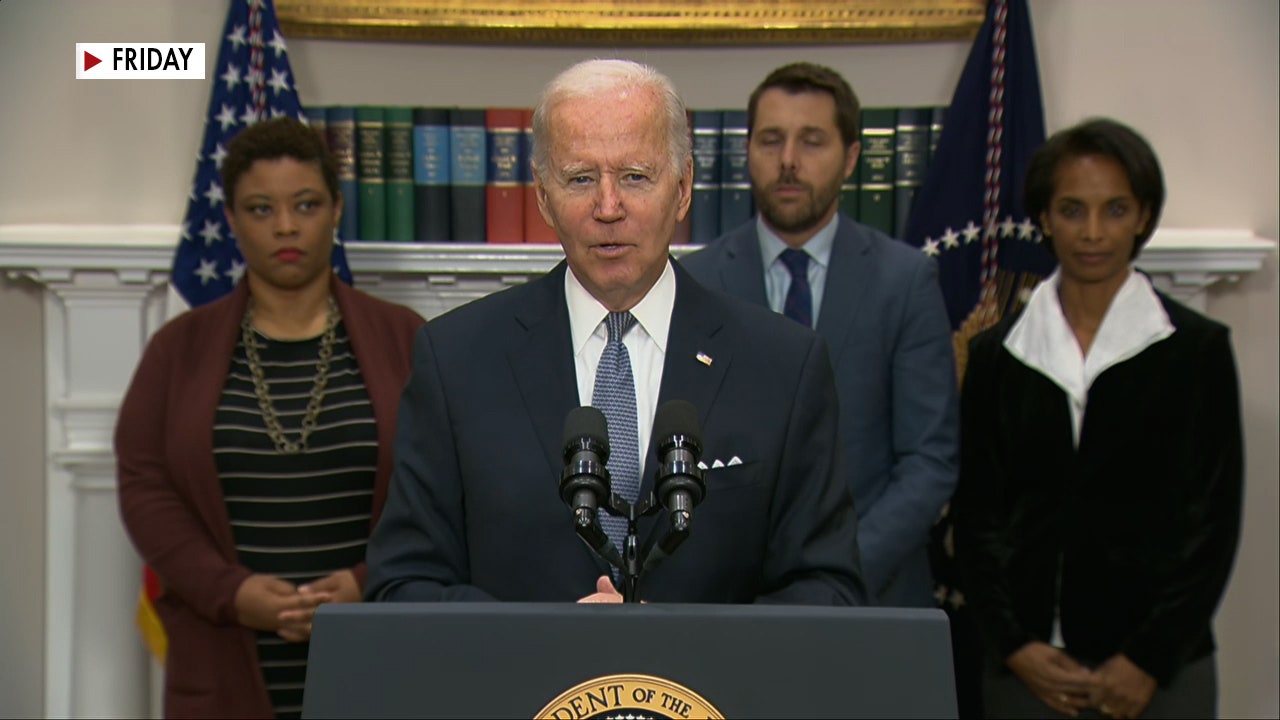Compatible with the PlayStation 4 and PlayStation 5, the PlayStation VR is still the premiere VR headset for console gamers that packs an impressive library of high profile first-party titles as well as great third-party releases. Initially launching for $399 back in 2016, the PSVR is currently available in a bundle that includes the head itself, dual Move controllers, a PS Camera and Marvel’s Iron Man game that goes for anywhere from $249 to $399 depending on sales.
Until more information on the upcoming PlayStation VR 2 is eventually announced, we look into whether it’s worth it to purchase a PSVR. Here are our thoughts after spending a handful of years with Sony’s VR headset.
The PSVR is an exceptional VR headset for PlayStation 4 or 5 owners already invested in Sony’s gaming ecosystem. However, potential buyers may be better off waiting to see what the PSVR2 has to offer.
Thoughtful headset and controller design
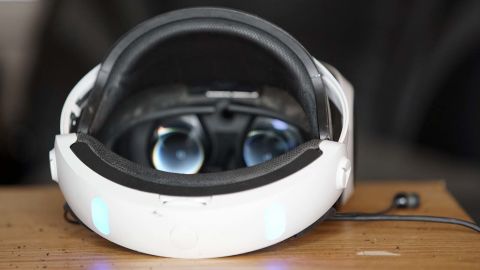
Visually, the PS4 was the clear design inspiration for the PSVR. There’s a sleek rounded design that goes well with its black and white colorway. The visual aesthetic of the headset really looks wonderful once the LED sensor lights up. Once in operation, the PSVR provides a cool light show between the headset and Move Controller LEDs — especially if people watch while someone is playing in the dark.
Compared to other VR devices from Meta, HTC and HP, the PSVR is one of the most comfortable for a handful of reasons. First, it’s only .2 pounds heavier than the Meta Quest 2 while feeling just as light during operation. There’s a good balance of weight all around that makes it easy to freely move your head. Instead of using a strap-like most VR headsets, the PSVR features a circular band that sits on top of the head.
This allows users to push and pull the headset toward or away from their face by holding a button on top of the faceplate while tightening it with a dial on the band’s rear. The cushions on both the forehead and behind the head are comfortable. However, prolonged usage over the years has led to a bit of decay on the cushions on my unit.
On the band is a 3.5mm headset jack with cutouts to hold the included earbuds in place. It’s a nice touch that keeps the design uniform and prevents your headphones from dangling or getting in the way during gaming. Audiophiles looking for richer audio can also plug in their earbuds, headphones, or gaming headset of choice.
The wand-like Move controllers are comfortable to hold, and the button positioning is intuitive. Like the multiple LEDs on the PSVR headset itself, there’s also a singular LED bulb that communicates with the PS camera for tracking. Various movements feel great on the Move controller and accessing the buttons never felt strenuous — even during long VR sessions. Though many games don’t utilize it, the best input device available for the PSVR is the Move Aim controller when it comes to first-person-shooters.

Sony has developed a serious reputation for providing some of the grandest AAA first-party blockbusters available on consoles, including staples like God of War, Last of Us and Ratchet & Clank.
With that said, Sony’s approach to VR doesn’t reach the heights of its more traditional gaming output, but definitely sets a wonderful foundation for the future. Exclusive first-party games available including Astro Bot Rescue Mission, Blood & Truth, Until Dawn: Rush of Blood, Firewall: Zero Hour, Farpoint and Marvel’s Iron Man offer some of the best VR experiences available on any platform.
By tapping into the power of your PS4 or PS5, the PSVR delivers some fairly spectacular-looking games that sometimes reach the same visual fidelity of PC-based VR titles. Not only do they look amazing. but they also perform smoothly thanks to the PSVR’s support for up to a 120Hz refresh rate.

The PSVR also features its fair share of multi-platform games such as Superhot VR, Werewolves Within, Arizona Sunshine or the phenomenal The Walking Dead: Saints and Sinners. If you’re looking to get your fitness on, you’ll enjoy titles like BoxVR and Beat Saber. There’s a bit of something for everyone here, though the majority of the VR games available skew toward more gaming enthusiasts than the more mainstream Meta Quest 2.
On top of the platform’s dedicated VR titles, there are also several traditional PS4 games that have special VR modes packed in. Star Wars: Squadrons, Hitman 3, Gran Turismo Sport and Resident Evil 7: Biohazard can be played almost entirely in VR. Resident Evil 7: Biohazard in VR is an even more horrifying experience than when playing in front of a television. Playing Gran Turismo Sport with both a VR headset and steering wheel is arguably the best immersive sim-racing experience available on any VR platform. Most importantly, users can simply use their PlayStation controller for input too.
It can make your standard games and apps more immersive

One exceptionally cool feature of the PSVR is its cinematic mode. Individuals with family or roommates who like to hog the living room TV can make it an alternative display for playing their standard PS4 or PS5 games. It’s all very similar to the virtual desktop apps for Meta Quest 2 or HTC Vive.
The effect is similar to gaming in a private movie theater as screen sizes can be modified between 117, 163 and a whopping 226 inches. Playing games like Uncharted 4: Among Thieves through the PSVR is a better experience than watching the recent Uncharted film adaptation. Games just feel more epic, especially first-party single-player games from Sony. Meanwhile, this bleeds into other apps — most notably video streaming apps like Netflix, Hulu or Sling TV. Watching movies and television shows on the PSVR makes everything feel like you’re in an exaggerated home theater or private multiplex. Add a good pair of headphones, and gaming or watching video through PSVR’s cinematic mode feels incredibly advanced technologically.
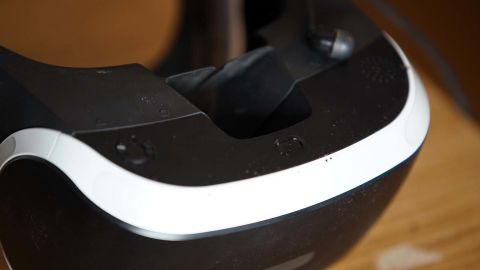
Setting up the PSVR on both the hardware and software side of things is definitely a more complicated experience than on other VR headsets. This simply isn’t a pick-up-and-play device. Users should know that PS4 or PS5 owners are going to need a free USB port on their console alongside an extra power outlet. Thankfully, the instruction guide does a good job of explaining how to connect everything despite the amount of work and cable management involved.
Connecting the PSVR means connecting the PS4 or PS5 HDMI cable from the console to the processor box included. The processor box features another passthrough port which connects to a television or monitor display. Besides connecting the PSVR headset to the processor box through microUSB, it needs its own power outlet to use and connects to the console’s USB port.
Though PS4 users have a port for using the PS Camera, it’s a bit different for PS5. Owners of Sony’s current gen-console are going to have to either call the company’s customer service line to receive a free adapter which works through USB or buy one on Amazon.
The biggest problem with this setup is that everything has to be connected and working even if users aren’t in the mood to use their PSVR. Because of the PS Camera’s limited capabilities, calibrating the PSVR and Move controllers are a pain as well. Users are also going to need a sizable amount of room for the tracking system to work during calibration for both headset and controllers.

Since the PSVR was released so long ago for the PS4, the headset is a bit behind the times. Beyond its relatively low screen resolution of 960 x 1080 per eye, it also uses LED lights that communicate with the already low resolution PS Camera. This means the PSVR works best in a dark room as opposed to lighter lit rooms where the camera can read the LEDs better. In general, tracking isn’t anywhere as precise as other VR headsets because of this.
Though Sony’s consoles are more powerful than the Meta Quest 2, the games were made with the aging PS4 in mind. This means that there aren’t any games to take advantage of the PS5 as Sony is most definitely putting more resources into the upcoming PSVR2. It’s a shame that there isn’t a resolution boost or performance boost for playing on more powerful hardware like the PS4 Pro or PS5.
Compared to other VR headsets, the Move controllers are also very limiting. There’s only one analog trigger per controller and no thumbstick like you’ll find on the outstanding Quest 2 controller. This means playing multiplatform games on the Quest 2 like The Walking Dead: Saints and Sinners control-wise is just a better time than on the PSVR Move controllers. The one bright spot is the Aim controller, which features an analog stick and makes playing first-person-shooters rival the experience of playing on PC with a mouse and keyboard. Too bad there aren’t enough games that take advantage of it.
Even with the PlayStation VR 2 creeping around the corner, the PlayStation VR is still a great entryway into VR for PlayStation 4 or 5 owners. Like the consoles themselves, the first-party exclusives are the true stars of the show with fantastic games like Blood & Truth and Marvel’s Iron Man. The headset’s great third-party games also prove it can stand next to the more popular Quest 2. Outside of VR gaming, cinematic mode is an awesome feature for simulating playing games and watching movies on a theater-sized screen.
Just understand that there are some hardware limitations that reflect its PS4 origins. Also, PS5 owners might want to ask themselves if it’s even worth purchasing one with the PSVR2 on the way considering the PSVR currently doesn’t have any software to take advantage of the more powerful hardware. PS4 owners still stuck in the previous console generation may be able to get more legs out of their aging consoles through PSVR. Everyone else may be better off waiting on the next iteration.
| Required system | PS4 or PS5 | None (optional PC compatibility via Quest Link) | PC (Nvidia GTX 1060/AMD RX 480 or better) | PC (Nvidia GTX 970 or AMD RX 480 or better) |
|---|---|---|---|---|
| Connection type | Wired | Fully wireless | Wired or wireless (via adapter) | Wired |
| Weight | 1.3 pounds | 1.1 pounds | 1.87 pounds | 1.78 pounds |
| Resolution | 960 x 1080 per eye | 1832 x 1920 per eye | 2448 x 2448 per eye | 1440 x 1600 per eye |
| Refresh rate | Up to 120Hz | Up to 120Hz | Up to 120Hz | Up to 144Hz |
| Storage | N/A | N/A | N/A | N/A |
| Battery life | N/A | N/A | N/A | N/A |
| Price |
$249 |
$299 |
$799 |
$999 |














































